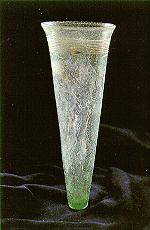 | |
To contact mi, click here This is an independent site |
 
THE COLLECTIONS ARCHAEOLOGY - The Chieftains 2500 - 650 BC
Through the Middle and Later Bronze Age (1800-650 BC), the population is growing and lowland landscapes in areas such as the Breckland are becoming more and more ordered as field systems, roads and settlements expand. Burial mounds for a powerful minority - the famous 'Round Barrows' - have been found locally in their dozens. The men who were buried here often display weapons of war such as bronze swords and spears, as well as axes, together with possessions of great beauty, sometimes in gold or jet. Ritual was now an important feature of life - ritual sites and objects that represent symbols of power are becoming more spectacular. This, after all, is the "Age of Stonehenge". |
 The Late Neolithic/Early Bronze Age period (2500-1800 BC) is dominated by an
influx of newcomers. The 'Beaker People' are so called because of the richly
decorated pottery drinking vessels they buried with their high status dead. These
were the first metalworkers - copper and bronze possessions now occasionally
appear in such burials.
The Late Neolithic/Early Bronze Age period (2500-1800 BC) is dominated by an
influx of newcomers. The 'Beaker People' are so called because of the richly
decorated pottery drinking vessels they buried with their high status dead. These
were the first metalworkers - copper and bronze possessions now occasionally
appear in such burials.